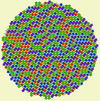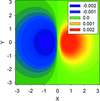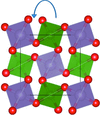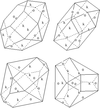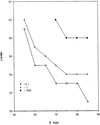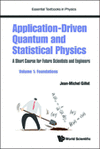issue contents
March 2020 issue

Cover illustration: A prime target for the synthesis of interwoven layered crystal structures is seven interwoven honeycomb (hcb) nets [see O'Keeffe & Treacy (2020), Acta Cryst. A76, 110-120]. No layer can be removed without breaking links, yet for any pair of nets (choose two colours) one is always above the other. Indeed, every coloured layer is `in the middle' of the structure, with three layers above it and three below.
advances
research papers
foundations
research papers
 access
access

 access
accessshort communications
 access
accessaddenda and errata



Thermoelectric transport properties in magnetically ordered crystals. Further corrigenda and addenda
international union of crystallography


obituaries

book reviews





 journal menu
journal menu












